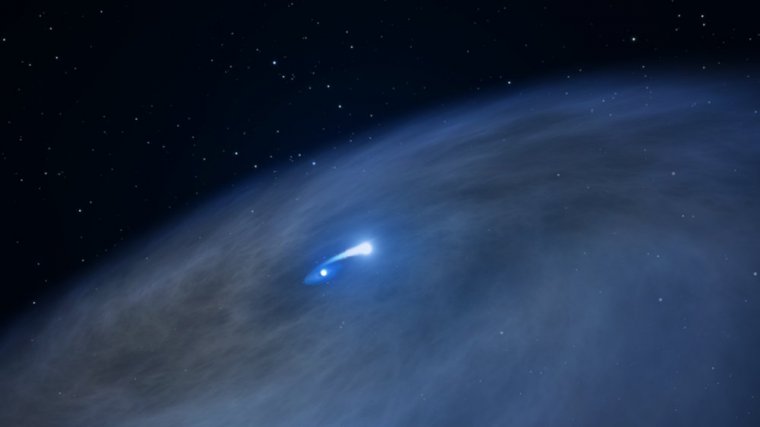| News / Space News |
Hubble Observes One-of-a-Kind Star Nicknamed 'Nasty'
NASA | MAY 24, 2015
Astronomers using NASA's Hubble Space Telescope have uncovered surprising new clues about a hefty, rapidly aging star whose behavior has never been seen before in our Milky Way galaxy. In fact, the star is so weird that astronomers have nicknamed it "Nasty 1," a play on its catalogue name of NaSt1.

Mass Star and Smaller Companion Create Vast Gas Disk (Artist's Illustration) ![]()
First discovered several decades ago, Nasty 1 was identified as a Wolf-Rayet star, a rapidly evolving star that is much more massive than our Sun. The star loses its hydrogen-filled outer layers quickly, exposing its super-hot and extremely bright helium-burning core.
Hubble revealed a pancake-shaped disk of gas encircling the star. The vast disk is nearly 2 trillion miles wide, and may have formed from an unseen companion star that snacked on the outer envelope of the newly formed Wolf-Rayet. Based on current estimates, the nebula surrounding the stars is just a few thousand years old, and as close as 3,000 light-years from Earth.
Nasty 1 may also be shedding the material sporadically. Past studies in infrared light have shown evidence for a compact pocket of hot dust very close to the central stars. Recent observations have resolved a larger pocket of cooler dust that may be indirectly scattering the light from the central stars.
The presence of warm dust implies that it formed very recently, perhaps in spurts, as chemically enriched material from the two stellar winds collides at different points, mixes, flows away, and cools. Sporadic changes in the wind strength or the rate the companion star strips the main star's hydrogen envelope might also explain the clumpy structure and gaps seen farther out in the disk.
YOU MAY ALSO LIKE



